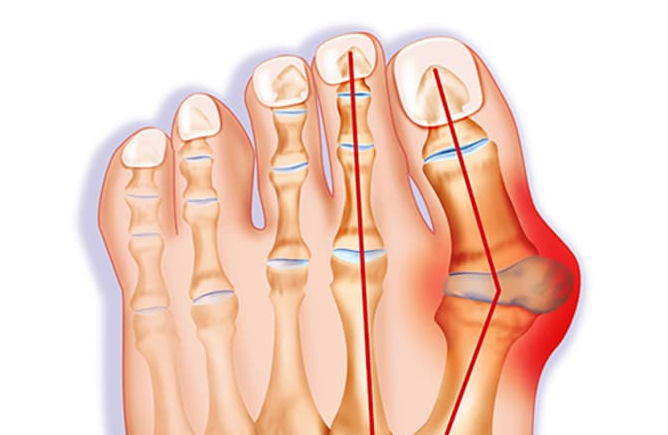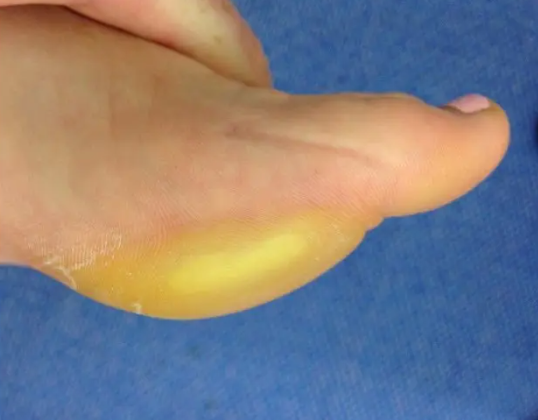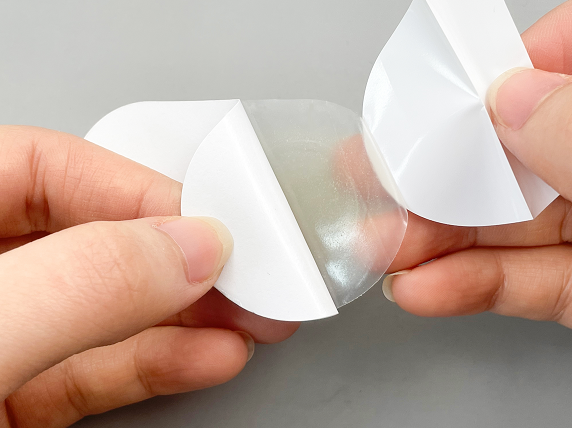Bunions According to statistics , as many as one in three Americans suffer from bunions. Foot problems are more common among older adults, especially women. Bunions can develop on one or both feet. It is also a relatively common foot problem in life, known as hallux valgus, which manifests as a lump on the side of the foot below the big toe. The joints can be red and painful , and the onset of bunions is usually gradual. In fact, the degree of deformity does not always correlate with the degree of pain. Bunions also often appear together with blisters, which especially increase with certain shoes and sports. Let me take a look at how to treat and prevent bunion blisters.
What is a bunion?
A bunion is a bump that develops on the outside of the big toe. This foot deformity is caused by years of pressure on the big toe joint. Eventually, the toe joints become misaligned, creating bony bumps. The medical term for a bunion is hallux valgus. A bunion can widen the foot, making it more likely to rub against the shoe and form a blister.
What causes bunions ?
genetics and some external factors may be responsible, but the following are some stressors and potential risk factors, including:
① Walking style : Especially women who often wear high heels, stand for a long time and wear narrow shoes that don't fit .
②Ligament laxity : joints rely on ligaments to maintain structural stability. When the ligaments are lax, the shape of the foot forces the big toe to bend toward the second toe. Bunions develop gradually over time.
③ Shoes that are too small or too tight : This is a common cause of bunions. This includes old shoes, heels and pointe shoes that have been passed down from older siblings. This of course doesn't help as these shoes tend to push the big toe towards the other toes.
Why do bunions blister ?
bunion can widen the forefoot. The skin over a bunion bump can become red, rub, blister, callus, or less commonly, corns . The tighter the shoe, the more it squeezes and rubs against the widest part of the foot. However, also common are calluses and blisters under the lower border of the condyle. This is where the lump protrudes from the side of the sole , and the skin under the raised edge is subjected to localized high load-bearing pressure.
prevent edge blisters :
① Reduce stress: Reduce stress as much as possible. That means, do everything you can to make the shoe wide enough to fully accommodate the bunion . This way it doesn't stick out of the sole. For example: sports shoes, ladies can buy men's shoes , men 's shoes of the same length are wider.
② Reduce friction: It is necessary to reduce the friction level as much as possible. It is recommended to use innomed ® blaster plaster to stick it on the parts that are easy to be worn. Its surface is very smooth, which can reduce the friction with shoes, and it is very sticky and not easy to fall off.
If the edges are blistered ?
For blisters with a diameter of more than 5 mm, first disinfect your hands and the blister site, then use a blood collection needle to puncture the blister at the edge of the blister, and then use blister plaster to stick it on the blister. It is made of hydrocolloid dressing and can heal the wound Provide a slightly acidic airtight space that is conducive to wound healing, and can also prevent the invasion of foreign microorganisms and reduce the chance of wound infection. Its smooth and soft surface can also reduce pressure and friction, thereby reducing local pain.
How to relieve bunions ?
①Choose the right shoe: If there is a problem with your current shoe, finding a roomier, more comfortable shoe can reduce pain and possibly even slow the progression of the deformity.
②Cushions and pads: Various options exist, such as Foam Dressing for bony protrusions , which will not repair bunions but can relieve superficial symptoms.
③ Orthotics: Inserts and orthotics can be used to address the biomechanical cause of bunion development—instability of the first metatarsal joint. Counter and custom formats are available. It is highly recommended that you see a podiatrist - a specialist in the anatomy and function of the foot - to determine if orthotics are right for your situation. If so, choose the specific design elements your feet need to make them work adequately.
④Surgery: Surgery is the permanent solution to bunions. As a bone deformity, only bone surgery can truly "correct" a bunion.
For more information on Innomed® blister plaster , refer to the previous articles. If you have customized needs, you are welcome to contact us; we will serve you wholeheartedly.
At Longterm Medical, we transform this data by innovating and developing products that make life easier for those who need loving care.
Editor: kiki Jia
Date: November 28, 2022

 English
English عربى
عربى Español
Español русский
русский 中文简体
中文简体








